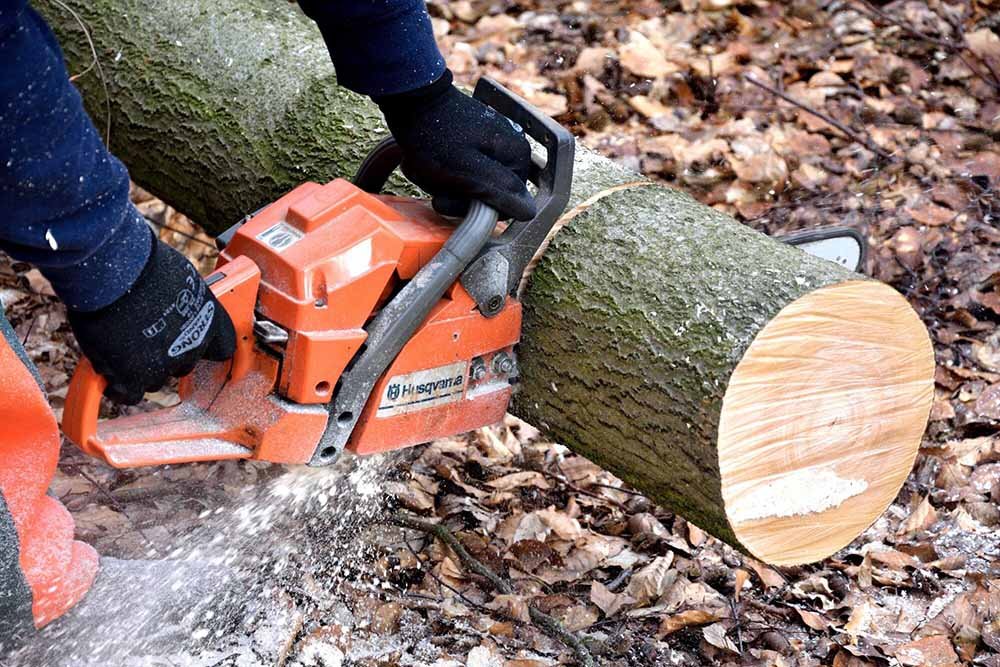Have you ever looked at a small tree in your yard and wondered if it’s time for it to go? Small tree removal can seem like a simple task, but it’s essential to approach it correctly to avoid potential problems. In this blog post, we’ll walk you through the key do’s and don’ts of small tree removal, ensuring that you handle the process safely and effectively.
By the end, you’ll know exactly what steps to take to make your yard maintenance smoother and more efficient.
Do Assess the Tree’s Condition
Before you even think about removing a small tree, take some time to assess its condition. Is it still alive and thriving, or is it showing signs of disease or damage? If the tree is healthy, then removal may not be necessary.
Check for Health and Stability
Before you start any small tree removal, it’s important to assess the tree’s health and stability. Look for signs of disease, such as discolored leaves, unusual growth patterns, or visible decay. A healthy tree is generally more challenging to remove than a dead or dying one, so this assessment will help you determine the best approach.
Consider the Tree’s Location
Examine the tree’s location in your yard. Is it near power lines, your house, or other structures? The proximity to these obstacles can complicate the removal process and may require professional help. Ensure you have a clear understanding of the surrounding area to prevent any accidents or property damage.
Evaluate Potential Risks
Identify any potential risks associated with removing the tree. This includes the risk of the tree falling in an unintended direction, causing injury or damage. If you’re unsure about the risks, it’s best to consult with yard maintenance services who can provide a professional assessment.
Don’t Forget to Check Local Regulations
Before removing a tree, it’s important to check with your local government or homeowners association to see if there are any regulations or permits required. Some areas may have restrictions on the removal of certain trees, especially if they are considered protected or endangered species.
Understand Local Ordinances
Before you proceed with small tree removal, check local ordinances and regulations. Some areas have specific rules regarding tree removal, especially if the tree is part of a protected species or is located within a designated zone. Ignoring these regulations can result in fines or legal issues.
Consult with HOA
If you live in a neighborhood with a homeowners association (HOA), consult with them before removing the tree. HOAs often have their own set of rules regarding tree removal to maintain the community’s aesthetic. Getting their approval can save you from potential conflicts and penalties.
Do Use the Right Tools and Safety Gear
Tree removal can be a dangerous task, especially if you’re dealing with large or tall trees. It’s crucial to use the right tools and safety gear to protect yourself and others around you. This includes sturdy work gloves, eye protection, a hard hat, and appropriate footwear.
Gather Proper Tools
Having the right tools is crucial for small tree removal. This typically includes a handsaw or chainsaw, pruning shears, a shovel, and a wheelbarrow for transporting debris. Using appropriate tools ensures the job is done efficiently and safely.
Wear Safety Gear
Always wear appropriate safety gear, such as gloves, goggles, and sturdy footwear, when removing a tree. This protects you from potential injuries caused by falling branches, sharp tools, or flying debris. Safety should be your top priority during the removal process.
Don’t Attempt Dangerous Cuts
Removing a tree often requires making cuts at different angles and heights. It’s important to know your limits and avoid attempting any dangerous cuts that could put you or others in harm’s way.
Avoid Cutting Above Your Head
One of the most dangerous mistakes during small tree cutting is cutting branches above your head. This increases the risk of branches falling on you and causing serious injury. Always cut branches at a safe height and ensure they can fall away from you without causing harm.
Don’t Overestimate Your Abilities
Removing a tree, even a small one, can be more challenging than it appears. If you’re not confident in your abilities, it’s best to hire tree removal experts. Professional services and Atlanta emergency tree removal can handle the job safely and efficiently, minimizing the risk of accidents.
Do Plan the Removal Process
Before starting the tree removal process, it’s important to have a plan in place. Identify any potential obstacles such as nearby power lines or structures that may be in the way. D
Outline the Steps
Planning your removal process involves outlining the steps you’ll take from start to finish. This includes determining where you’ll make your cuts, how you’ll dispose of the debris, and what tools you’ll need. A well-thought-out plan helps you execute the task smoothly and efficiently.
Create a Safe Work Zone
Establish a safe work zone around the tree by clearing away any obstacles and ensuring pets and children are kept at a safe distance. This prevents accidental injuries and allows you to focus on the task without distractions.
Do Consider Professional Help
Cutting down a tree can be dangerous, especially for larger trees or those in difficult locations. If you are unsure about your abilities to safely remove the tree, it is best to seek professional help
Assess When to Call Experts
Not all tree removal tasks are suitable for DIY. If the tree is particularly large, close to structures, or you’re unsure about the process, it’s best to hire professionals. Tree removal experts have the skills and equipment to handle complex removals safely.
Understand the Tree Removal Cost
Hiring professionals involves a cost, but it’s an investment in safety and efficiency. The tree removal cost varies based on the tree’s size, location, and complexity of the job. Get quotes from multiple local tree removal services to find the best price for your budget.
Do’s and Don’ts of Small Tree Removal
Small tree removal requires careful planning and execution to avoid potential hazards and ensure the job is done correctly. By following the do’s and don’ts outlined in this guide, you can handle the task safely and efficiently, or decide when it’s best to call in the professionals.
Whether you’re maintaining your yard or clearing space for new projects, proper tree removal techniques are essential.
Head over to our blog for more interesting reads like this!
















